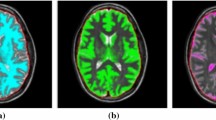Abstract
Emerging advanced technologies have seen a revolution of applications into medical field, in all its aspects and sides, this has helped healthcare practitioners and empowered them in achieving accurate diagnosis and treatment, specifically with the evolution of computer Aided Diagnosis systems which use image processing techniques, Computer vision,and deep learning applied on different medical images in order to diagnose the image, or sections of the image with particular diseases or illnesses. Medical images of multiples organs or parts of the body (Liver, brain, kidney, skin, etc...) can today be visualized thanks to the advanced medical imaging techniques that exists in the market (MRI, CT, etc…) these technologies uses high energy in order to acquire high quality images but high energy can harm human cells, this is why we us low energy and with this used we get slightly low quality medical images, and here technology intervenes where we can use preprocessing techniques in order to increase image resolution prior to perform diagnosis either by doctor or CAD system. We present in this paper a computer aided diagnosis system that provides an automated brain tissue segmentation applied on 3D MRI images with its four different modalities (T1, T1C, T2, T2 weighted) of BRatS 2020 challenge dataset, by implementing a U-Net like deep neural network which provides information about classification of brain tissue into healthy tissue, Edema, Enhancing tumour, Non enhancing tumour. The model achieved an accuracy of 99.01% and dice coefficient of 47.95% after 35 epochs of training.
Access this chapter
Tax calculation will be finalised at checkout
Purchases are for personal use only
Similar content being viewed by others
References
Frackowiak, R.S.J.: Human Brain Function. Elsevier (2004)
Friston, K.J., Jezzard, P., Turner, R.: Analysis of functional MRI time-series. Hum. Brain Mapp. 1(2), 153–171 (1994)
Al-Amri, S.S., Kalyankar, N.V., et al.: Image segmentation by using threshold techniques. arXiv preprint arXiv:1005.4020 (2010)
Ambeth Kumar, V.D., et al.: Exploration of an innovative geometric parameter based on performance enhancement for footprint recognition. J. Intell. Fuzzy Syst. 38(2), 2181–2196 (2020)
Lakshmi, S., Sankaranarayanan, V., et al. A study of edge detection techniques for segmentation computing approaches. In: IJCA Special Issue on “Computer Aided Soft Computing Techniques for Imaging and Biomedical Applications”, CASCT, pp. 35–40 (2010)
Hien, N.M., Binh, N.T., Viet, N.Q.: Edge detection based on fuzzy c means in medical image processing system. In: 2017 International Conference on System Science and Engineering (ICSSE), pp. 12–15. IEEE (2017)
Chakraborty, S., Roy, M., Hore, S.: A study on different edge detection techniques in digital image processing. In: Feature Detectors and Motion Detection in Video Processing, pp. 100–122. IGI Global (2017)
Wazarkar, S., Keshavamurthy, B.N., Hussain, A.: Region-based segmentation of social images using soft kNN algorithm. Procedia Comput. Sci. 125, 93–98 (2018)
Felzenszwalb, P.F., Huttenlocher, D.P.: Efficient graph-based image segmentation. Int. J. Comput. Vis. 59(2), 167–181 (2004)
Digabel, H., Lantu ́Ejoul, C.: Iterative algorithms. In: Proceedings of 2nd European Symposium Quantitative Analysis of Microstructures in Material Science, Biology and Medicine, vol. 19, p. 8. Riederer Verlag (1978)
McInerney, T., Terzopoulos, D.: Deformable models in medical image analysis. In: Proceedings of the Workshop on Mathematical Methods in Biomedical Image Analysis, pp. 171–180. IEEE (1996)
Jeevitha, K., Iyswariya, A., RamKumar, V., Mahaboob Basha, S., Praveen Kumar, V.: A review on various segmentation techniques in image processsing. Eur. J. Mol. Clin. Med. 7(4), 1342–1348 (2020)
Badrinarayanan, V., Kendall, A., Cipolla, R.: SegNet: a deep con- volutional encoder-decoder architecture for image segmentation. IEEE Trans. Pattern Anal. Mach. Intell. 39(12), 2481–2495 (2017)
Author information
Authors and Affiliations
Corresponding author
Editor information
Editors and Affiliations
Rights and permissions
Copyright information
© 2023 The Author(s), under exclusive license to Springer Nature Switzerland AG
About this paper
Cite this paper
Cherifi, D. et al. (2023). Study and Implementation of U-Net Encoder-Decoder Neural Network for Brain Tumors Segmentation. In: Hatti, M. (eds) Advanced Computational Techniques for Renewable Energy Systems. IC-AIRES 2022. Lecture Notes in Networks and Systems, vol 591. Springer, Cham. https://doi.org/10.1007/978-3-031-21216-1_47
Download citation
DOI: https://doi.org/10.1007/978-3-031-21216-1_47
Published:
Publisher Name: Springer, Cham
Print ISBN: 978-3-031-21215-4
Online ISBN: 978-3-031-21216-1
eBook Packages: Intelligent Technologies and RoboticsIntelligent Technologies and Robotics (R0)




